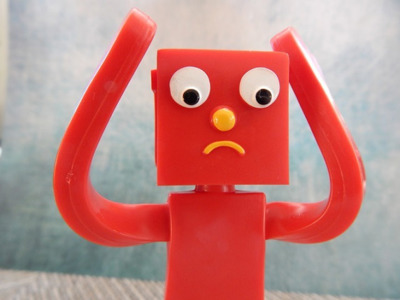
About anxiety
Everyone experiences anxiety from time to time. Anxiety is a term used to describe the thoughts and feelings we get when we are frightened, worried or stressed. Feeling anxious causes the body to produce adrenaline, which leads to physical responses such as a dry mouth, a pounding heart, butterflies in the tummy, sweating, dizziness and tense muscles.
Children and young people can feel anxious about different things at different ages. They may worry about anything in their world at any point in time. For example, starting primary school, overhearing arguing at home or falling out with friends.
Many children and young people will experience anxiety and this is a normal part of growing up. However, anxiety can become a problem when it impacts on a child or young person's day-to-day life.
Things you may notice
The NHS website outlines some things you may notice when a child or young person is anxious:
Younger children may:
- become irritable, tearful or clingy
- have difficulty sleeping
- wake in the night
- start wetting the bed
- have bad dreams.
Older children and young people may:
- lack the confidence to try new things or seem unable to face simple, everyday challenges
- find it hard to concentrate
- have problems with sleeping or eating
- be prone to angry outbursts
- have negative thoughts going round and round their head, or keep thinking that bad things are going to happen
- start avoiding everyday activities, such as seeing friends, going out in public or attending school.
Think about your response
It is important to consider your own emotional response to the situation. If you have experienced anxiety yourself, this can be useful in helping the child or young person, but can also influence how you respond. You may feel that you want to protect the child or young person from difficult, anxiety-provoking situations. However, it is also important to support them through their challenges.
What you can do
- Normalise anxiety and explain the physical responses. This can help children and young people understand why, for example, their heart might race when they go to a class they are worried about or why they feel tense before an exam.
- Show empathy and actively listen to their worries without judgment, comment or advice.
- Let them talk things through and support their ability to problem-solve.
- If the worry can be resolved, support them to make a list of possible solutions. Remind them to focus on the things they can change, and that there might not be a perfect solution. Help them to make an action plan with steps they need to take to resolve the worry.
- Help children and young people to work out what they are anxious about. Instead of treating the worry like a fact, encourage them to develop a more balanced perspective, by asking themselves:
- What is making me feel anxious and what am I worried will happen?
- What’s the evidence for this thought and what’s the evidence against it?
- What would I say to a friend who had this worry?
- What would a friend say about my worry?
- Have I confused this worry with a fact?
- Is worrying helping me? How?
- If my worry did happen, what could I do to cope with it or handle it?
- Is there a more rational, realistic way of thinking about this situation?
- For teenagers, encourage them to write down their worries in a journal. Children could post their worries into an old tissue box and you can go through the box together. Avoid doing this just before bed.
- Encourage them to avoid all-or-nothing thinking, like “if I don’t do this perfectly, I’m a total failure”.
- Help them to face the situations they are anxious about, by taking small steps towards overcoming their anxiety. Give them praise and rewards at each step to motivate them to keep going.
- When facing an anxious situation, encourage them to think positively, for example “these feelings will pass”, “I have faced this problem before and I know how to handle it”.
- Remind them that taking some deep breaths will help to calm down the physical symptoms of anxiety.
- Encourage them to do things that help them feel more relaxed and distracted from worries, for example spending time with friends, playing sports, relaxation exercises.
- Worrying usually focuses on the past or future - mindfulness can help children and young people focus attention on the here and now.
Other resources
Anxiety Canada, self-help website:
www.anxietycanada.com/articles/parent-child/
Anxiety self-help guide from NHS Inform:
https://www.nhsinform.scot/illnesses-and-conditions/mental-health/mental-health-self-help-guides/anxiety-self-help-guide
Clear Fear App, to help manage symptoms of anxiety:
www.clearfear.co.uk/
CBeebies, helping kids keep calm:
www.bbc.co.uk/cbeebies/joinin/seven-techniques-for-helping-kids-keep-calm
Mikeysline, website with text-based support:
www.mikeysline.co.uk
Mindshift App, to help young people manage anxiety:
www.anxietycanada.com/resources/mindshift-cbt/
Moodcafe, self-help website from NHS Fife:
www.moodcafe.co.uk/for-children/feeling-worried-frightened-stressed-or-anxious/
Who to contact if you're still concerned
For parents and carers
Please contact your health visitor, school, GP or other professional involved with your family.
For professionals
Please consult with other professionals involved or the named person, and to help identify the most appropriate support, go to: www.nhsfife.org/camhs-choosingtherightsupport



